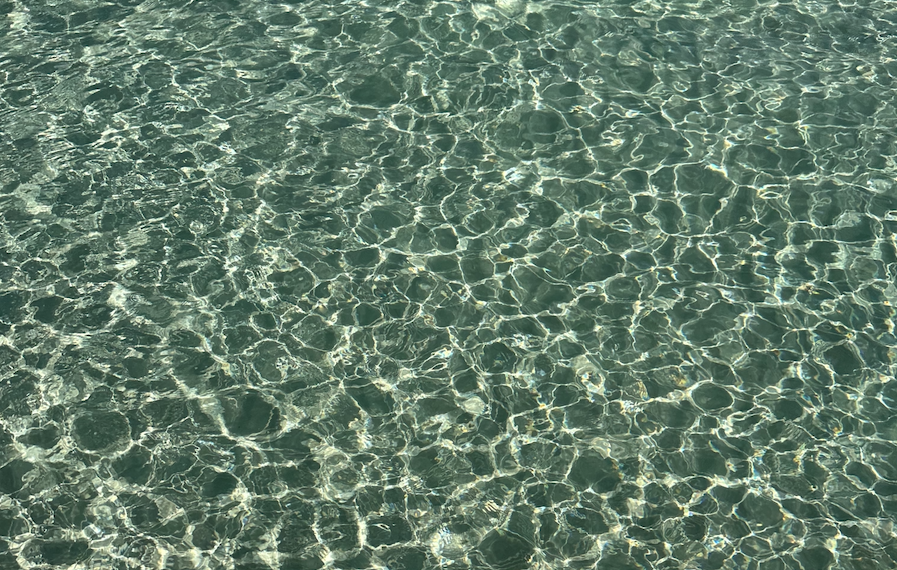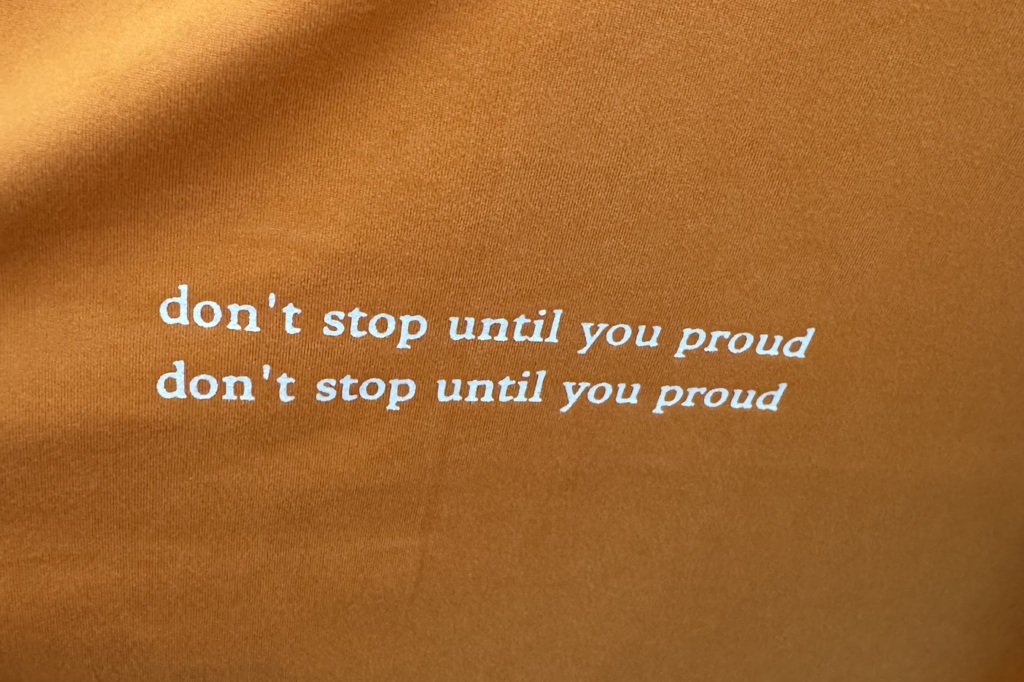
When I first quit my full-time job almost exactly one year ago, I found my days filled with an abundance of freedom.
And while this was incredibly thrilling, it was also anxiety-inducing at first.
Without an organization owning my professional priorities and primary life schedule, I found myself with so. Much. Time.
Time? WTF is that? What do I do with it? How do I structure it? How do I maximize it?
At first, because I am a recovering hustle princess, I defaulted into productivity mode. I went to work putting systems in place that would help me maximize my daytime hours.
My early post-quit days typically looked like this:
- Two hours dedicated to writing
- One hour dedicated to researching a business topic I was curious about
- Another spent reaching out to cold and warm leads for my business
- Forty-five minutes of exercise
- An hour or three of sidetracked admin, doom scrolling
- Rest of the day: Panic about what else I should be doing, beat myself up for not doing enough
In short, I channeled all my energy toward productivity. I barely left time for rest, let alone play.
Because from my POV, gurrrl there was no time. I’d left my source of income; it was time to hustle!
All work, no play. No time to be silly.
But as the months rolled on, some interesting feelings set in: When was the last time I actually had total control over my time like this? When was the last time I didn’t wake up with my brain full of things I needed to get done for someone else’s dream?
When’s the last time I had…time? And why am I in such a rush to pass it?
What if I just like…chilled out and let myself do things just because?
Gradually, I started giving myself a break for doing stuff that wasn’t part of my daily productivity plan. Like teaching my stubborn senior dog some tricks, and learning to brush his teeth–a PROCESS, baybee. Or going for a hike in the middle of the day. Or cooking a new recipe from TikTok (or Reels from repurposed TikToks, let’s be real). Or watching a crappy movie whose ending I saw coming from 10 miles away. Or “unproductive” writing in my journal. You get it.
Ironically, in the times I allowed myself time to disconnect, dream, and do things “just because,” is often when my most peaceful, inspired moments would arrive. In the moments when I wouldn’t chase them down. In the moments I’d play.
As if life was telling me that it’s important to play. That play is just as crucial to adulthood as in childhood.
Why Play Is Crucial for Adults
As adults, finding time for play can be hard. If you’re a fellow millennial like me, you’ve probably had a conversation(s) like this recently: I’m too old for that. Who has time for hobbies? No new friends. Bruh, my knees; I’m good to sit this one out.
All things that are valid to an extent! Maybe?
But, it’s important to strike the balance between statements we use to protect ourselves vs. ones that hold us back.
My brethren, I’m here to give you permission for unstructured, creative play. Adults need to play. Why?
Because life’s short.
Because numerous studies and people way smarter than me say so. See:
- Dr. Stuart Brown, head of the National Institute for Play, told NPR: “Play is something done for its own sake. It’s voluntary, it’s pleasurable, it offers a sense of engagement, it takes you out of time. And the act itself is more important than the outcome.”
- According to mental health nonprofit HealthGuide.org, play helps relieve stress, improve brain function, stimulate the mind, boost creativity, improve relationships and your connection to others, and helps keep you feeling young and energetic. Hello?
- The National Institute for Play (THE authority on play) also says that having fun aka playing is the healthiest way to spend your time, after feeding and housing yourself.
- Health studies from Carnegie Mellon suggest that daily play is associated with a positive emotional and relational climate, and with feeling more effective in handling diabetes stressors.
- NBC News says that when done frequently, play strengthens your heart, boosts your lung function, and lowers your risk of developing coronary heart disease.
In short, play as an adult is not juvenile. Play is conducive to personal growth. Play keeps your fine, aging-like-wine self young and healthy. Play is good for our creativity and well-being.
But what does play look like for seasoned folks who have been trained to put themselves in the backseat all their lives?
Simple Ways To Incorporate Play

Luckily, finding ways to play as adults is simple. You can start by thinking of an activity you enjoy. Or you can try something new that intrigues you. The beauty of play is that it doesn’t need a strategy. Just try something out and see where it takes you.
As long as you enter a playful mindset and allow yourself to have fun, you’re partaking.
But if you’re a list lover or someone who just needs a starting point, here are some ideas for incorporating play into your grown-up life:
- Get outside. Hike. Jog. Walk with your earbuds in. Just move and feel the elements on your skin. Movement and nature are medicine. I am not a doctor, but many doctors and even NatGeo say so.
- Involve others. Plan a weekend gathering with friends, sign up for a class (paint and sip, pottery, or cooking, anyone?), see a concert, or try a new restaurant together. Make a list of places you haven’t seen in your city, then grab your favorite person and play tourist.
- Schedule routine play (wow, how adult does that sound?). Set a timer for 30 minutes and let yourself do a crossword puzzle, doodle, free write, dance and sing to your favorite songs, or read. Until time’s up, the sky’s the limit.
- Look at art, even if you’re not an art person. What better way to get out of your head than to visit galleries literally dedicated to showing work from other people’s heads? Head (lol) to your local museum to look at cool things made by others. Maybe you’ll feel inspired. Maybe you’ll feel confused. Maybe you’ll feel bored. But you’ll certainly feel something. Many museums also offer free days and special event promos!
- Batch and time your to-do lists. This one might spark side-eyes but I find it fun, so I say it counts. When life becomes an ever-growing to-do list, try this “Power Hour” concept from entrepreneur Amanda Goetz: Keep a running list of all your non-urgent, must-do items. Every week, schedule a block of time when your brain’s headed into weekend mode. Knock out as many tasks as possible in that block. It’s like a game. A grown-and-sexy, productive, responsible game that reduces your cognitive load. FUN!
- Read. A cool way to explore new worlds and curiosities without taking a single step? Books. I’m usually reading a few books at a time–a non-fiction for creative or business advice, a fiction one for fun and feels. The non-fiction is my daytime read (5-10 pages during lunch), while the fiction pick is my bedtime read to help me fall asleep. Reading engages your mind differently than watching screens, and a 2009 study at the University of Sussex found that reading can reduce stress by up to 68%. So head to a bookstore, or better yet, visit your local library to read to your heart’s content for free.
- Get puzzled. Jigsaw puzzles are fun, low-key ways to play at home. You can also enjoy them alongside a movie, show, or with your partner and friends.
- Join a creative community. When I started writing my first novel, I didn’t know a single author. So, I sought out other writers by joining organizations like SCBWI and writers’ groups on Facebook. The people I met through these groups have progressed me toward my wildest dreams like I never thought possible, and we’ve helped each other so much. These groups have also made me a better writer, friend, and entrepreneur. Best of all? They’re pretty easy to find, and most are free. Search Facebook, Google, and local community boards for groups of like-minded people with similar interests.
- Spend time with the youth. Hanging with kids helps you experience play from their perspective. It can also be entertaining as hell–I’ve learned so much about Gen Z slang and isms from my nephews. (They’re not little kids, but they’re a blast to be around! I consider it play.) If you don’t have kids, arrange time to visit your friends’ kids, nephews, nieces, or other young relatives.
- Visit a thrift or novelty store. It’s fun to explore gems that have been pre-loved, or stores dedicated to specialties like magic, comics, games, or toys. Thrift and novelty storess offer unique perspectives on different niches. You might even come across your next hobby or inspiration.
Well, this has been fun. But let’s connect and share ideas around play for adults.
Fellow adults, how do you play?


